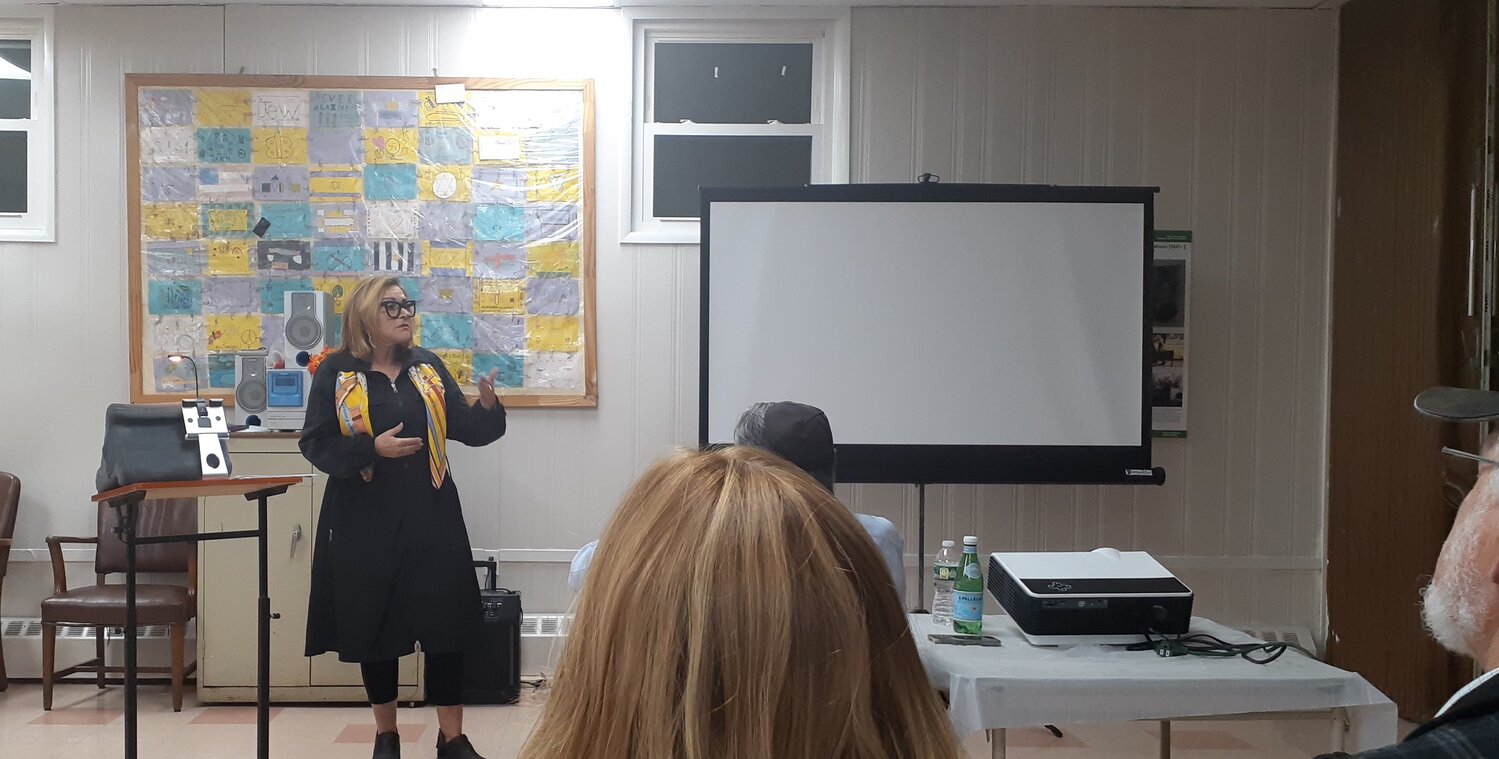Preserving the legacy of Holocaust survivors in Cedarhurst
The Marion & Aaron Gural JCC continued its program for second-generation Holocaust survivors to preserve their families’ legacies with a discussion about the dispossession of Europe’s Jews and their assets, focusing on fine art.
Studies in the Holocaust — Education, Memories, Awareness (SHEMA) is an initiative that began at the JCC during the height of the Covid pandemic and focused on collecting and sharing Holocaust survivors’ bios and educating middle and high school public school students about the Shoah in-person and Zoom member presentations.
“When we realized that our survivors were aging out and we needed people to tell their stories,” said Rachayle Deutsch, the JCC’s cultural arts and education director. “The idea is to perpetuate the stories and the memories of survivors, because unfortunately, one day soon we’re not going to have that many left.
The April 19 lecture focused on the seizures of artwork by the Nazis during World War ll. Lawrence resident Bina Levy has a long-standing career in fine art. She is the owner and curator of the Bina Gallery in Lawrence and the Bo Gallery in Brooklyn, along with her partner Jacob Elbogen.
She seeks to source the finest in Jewish and Israeli art, both past and present. As the daughter of Polish Holocaust survivors, the subject of Nazi-looted art and artifacts has always been a particular interest to Levy. Questioning provenance remains the job of every art dealer, auctioneer, and collector.
“The topic of Nazi-looted art combines two passions of mine, fine art, which includes collectibles, and the history in Europe from the years 1933 to 1945 and the consequences of those dark years,” Levy said. “The sheer volume of artworks stolen by the Nazis during World War Two from both museums and private, mainly Jewish collections, throughout Europe is nothing less than staggering.
The wholesale plunder was not just an incident of war, but an official Nazi policy. Many of the Nazi seizures comprised some of the greatest works in European museums and collections, which include modern impressionists and expressionists such as Picasso, Egon Sheila and other famous artists.
The Nazi regime sold huge numbers of these works at auctions in Europe so that they could get currency to support their war effort. The Nazi art confiscation program is the greatest displacement of art in human history.
The U.S. government has estimated Nazi agents before and during WW II seized or coerced the sale of 1/5 of all the art that existed throughout Europe. In total, a quarter of a million pieces of art.
American troops recovered much of the artwork, looted by the Nazis. After the war, the task began of sorting millions of pieces of art, cultural artifacts, and other items.
Global governments with huge art collections of their own started placing information about artworks in their collection for which there was a gap in ownership history or provenance between the years of 1933 to 1945 and asked those with further information about these works to come to contact them and perhaps make a claim for recovery. Museums around the world continue to work to find out whom the rightful owners are of artwork received.
“Much of the art that could not be traced to the original owner has been returned to Israel,” Levy said. “However, of the 250,000 known pieces, which were looted by the Germans, 100,000 of them are still out there.”

 41.0°,
Fair
41.0°,
Fair 




